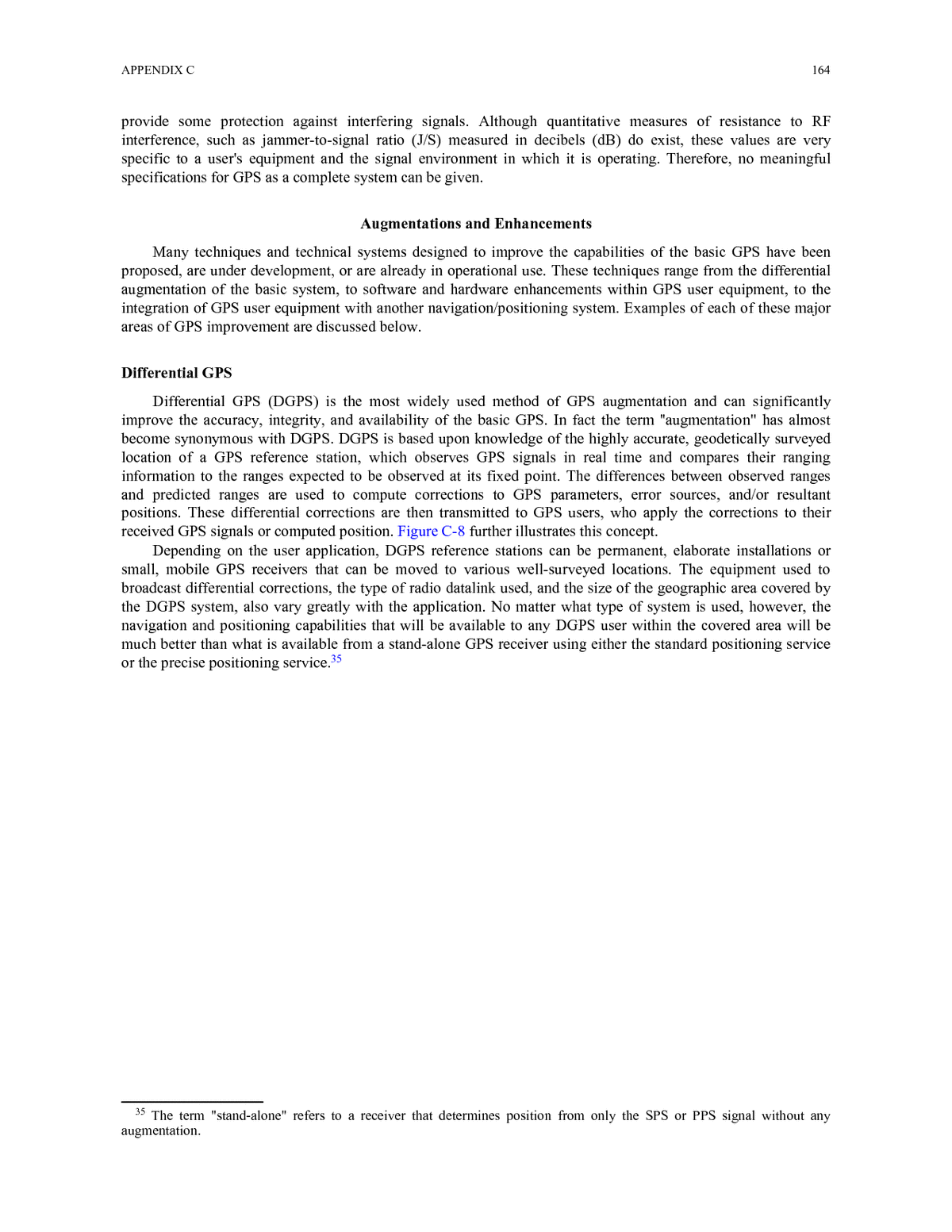Below is the uncorrected machine-read text of this chapter, intended to provide our own search engines and external engines with highly rich, chapter-representative searchable text of each book. Because it is UNCORRECTED material, please consider the following text as a useful but insufficient proxy for the authoritative book pages.
APPENDIX C 164 provide some protection against interfering signals. Although quantitative measures of resistance to RF interference, such as jammer-to-signal ratio (J/S) measured in decibels (dB) do exist, these values are very specific to a user's equipment and the signal environment in which it is operating. Therefore, no meaningful specifications for GPS as a complete system can be given. Augmentations and Enhancements Many techniques and technical systems designed to improve the capabilities of the basic GPS have been proposed, are under development, or are already in operational use. These techniques range from the differential augmentation of the basic system, to software and hardware enhancements within GPS user equipment, to the integration of GPS user equipment with another navigation/positioning system. Examples of each of these major areas of GPS improvement are discussed below. Differential GPS Differential GPS (DGPS) is the most widely used method of GPS augmentation and can significantly improve the accuracy, integrity, and availability of the basic GPS. In fact the term ''augmentation" has almost become synonymous with DGPS. DGPS is based upon knowledge of the highly accurate, geodetically surveyed location of a GPS reference station, which observes GPS signals in real time and compares their ranging information to the ranges expected to be observed at its fixed point. The differences between observed ranges and predicted ranges are used to compute corrections to GPS parameters, error sources, and/or resultant positions. These differential corrections are then transmitted to GPS users, who apply the corrections to their received GPS signals or computed position. Figure C-8 further illustrates this concept. Depending on the user application, DGPS reference stations can be permanent, elaborate installations or small, mobile GPS receivers that can be moved to various well-surveyed locations. The equipment used to broadcast differential corrections, the type of radio datalink used, and the size of the geographic area covered by the DGPS system, also vary greatly with the application. No matter what type of system is used, however, the navigation and positioning capabilities that will be available to any DGPS user within the covered area will be much better than what is available from a stand-alone GPS receiver using either the standard positioning service or the precise positioning service.35 35 The term "stand-alone" refers to a receiver that determines position from only the SPS or PPS signal without any augmentation.

